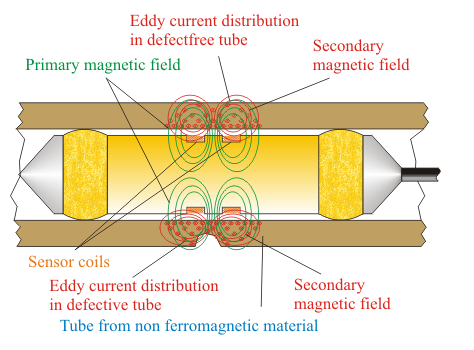The conventional eddy current method
The conventional eddy current method can be used essentially for testing of non-ferromagnetic materials.

The figure shows the construction of an eddy current sensor for the internal inspection of tubes using the conventional eddy current method. The sensor consists of two coils, differentially connected in a bridge circuit, supplied with alternating current. The generated alternating magnetic field in the coils (primary field) penetrates the tube wall inducing a current, known as "eddy-current", in the material. The eddy current field again generates a magnetic alternating field (secondary field) which is opposite to the primary field. The resulting field determines the voltage induced in the coil. In a normal defect-free tube the distribution of the eddy currents is constant, so that the resulting field and thereby the voltage induced in the coil does not change. In the case of reduction of the wall thickness the distribution of the eddy current field and therefore the secondary field is changed. By changing the secondary field the resulting field and thus also the voltage induced in the coils changes. The amplitude and Phase shift of the voltage variation is evaluated in the eddy current test method.

